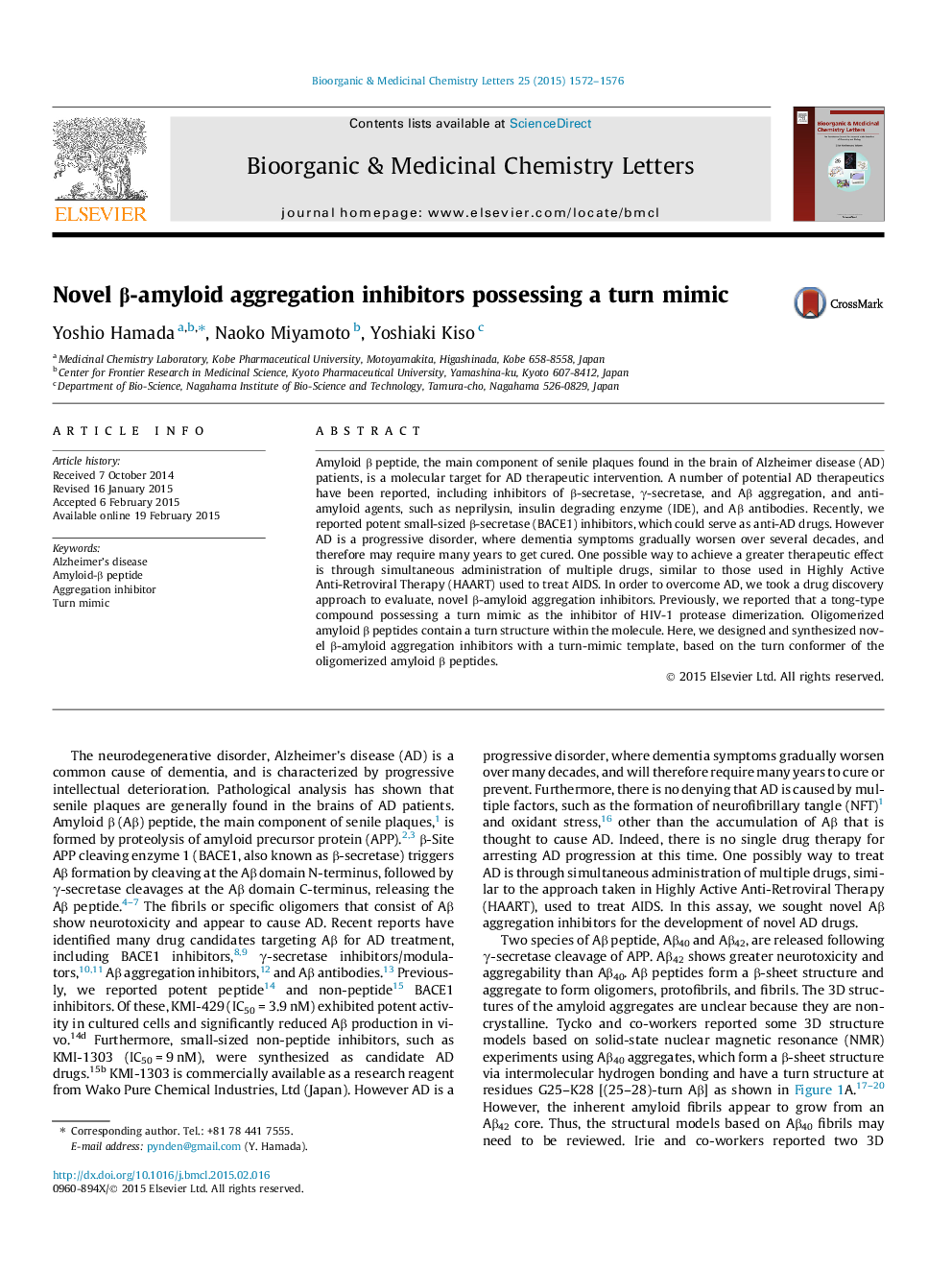| Article ID | Journal | Published Year | Pages | File Type |
|---|---|---|---|---|
| 1369108 | Bioorganic & Medicinal Chemistry Letters | 2015 | 5 Pages |
Amyloid β peptide, the main component of senile plaques found in the brain of Alzheimer disease (AD) patients, is a molecular target for AD therapeutic intervention. A number of potential AD therapeutics have been reported, including inhibitors of β-secretase, γ-secretase, and Aβ aggregation, and anti-amyloid agents, such as neprilysin, insulin degrading enzyme (IDE), and Aβ antibodies. Recently, we reported potent small-sized β-secretase (BACE1) inhibitors, which could serve as anti-AD drugs. However AD is a progressive disorder, where dementia symptoms gradually worsen over several decades, and therefore may require many years to get cured. One possible way to achieve a greater therapeutic effect is through simultaneous administration of multiple drugs, similar to those used in Highly Active Anti-Retroviral Therapy (HAART) used to treat AIDS. In order to overcome AD, we took a drug discovery approach to evaluate, novel β-amyloid aggregation inhibitors. Previously, we reported that a tong-type compound possessing a turn mimic as the inhibitor of HIV-1 protease dimerization. Oligomerized amyloid β peptides contain a turn structure within the molecule. Here, we designed and synthesized novel β-amyloid aggregation inhibitors with a turn-mimic template, based on the turn conformer of the oligomerized amyloid β peptides.
Graphical abstractFigure optionsDownload full-size imageDownload as PowerPoint slide
